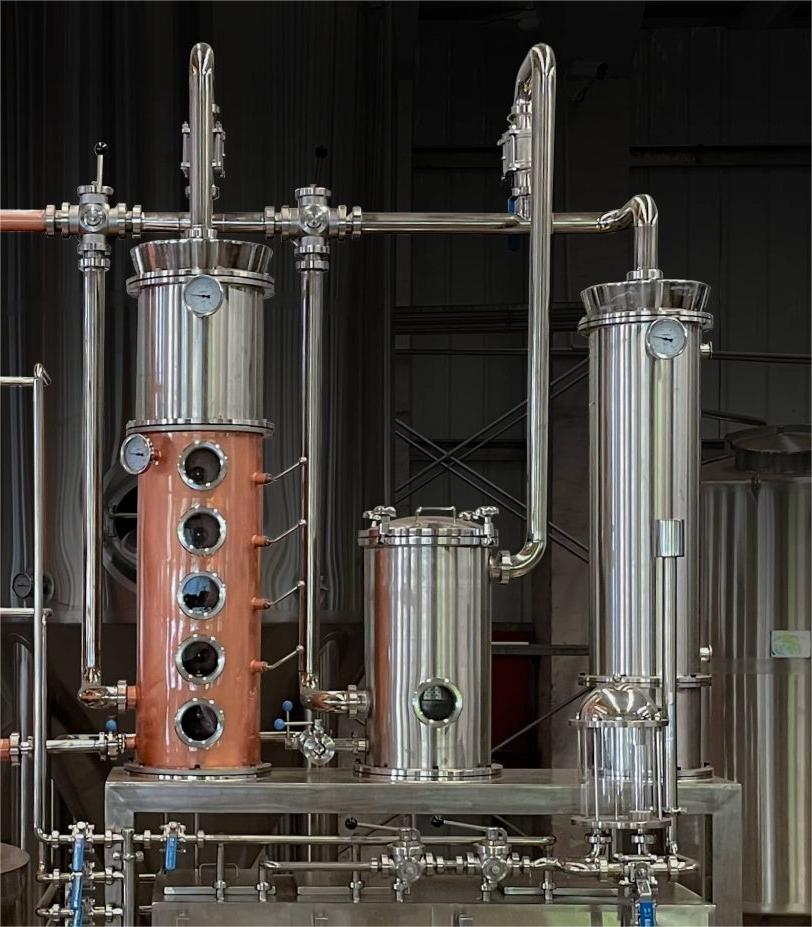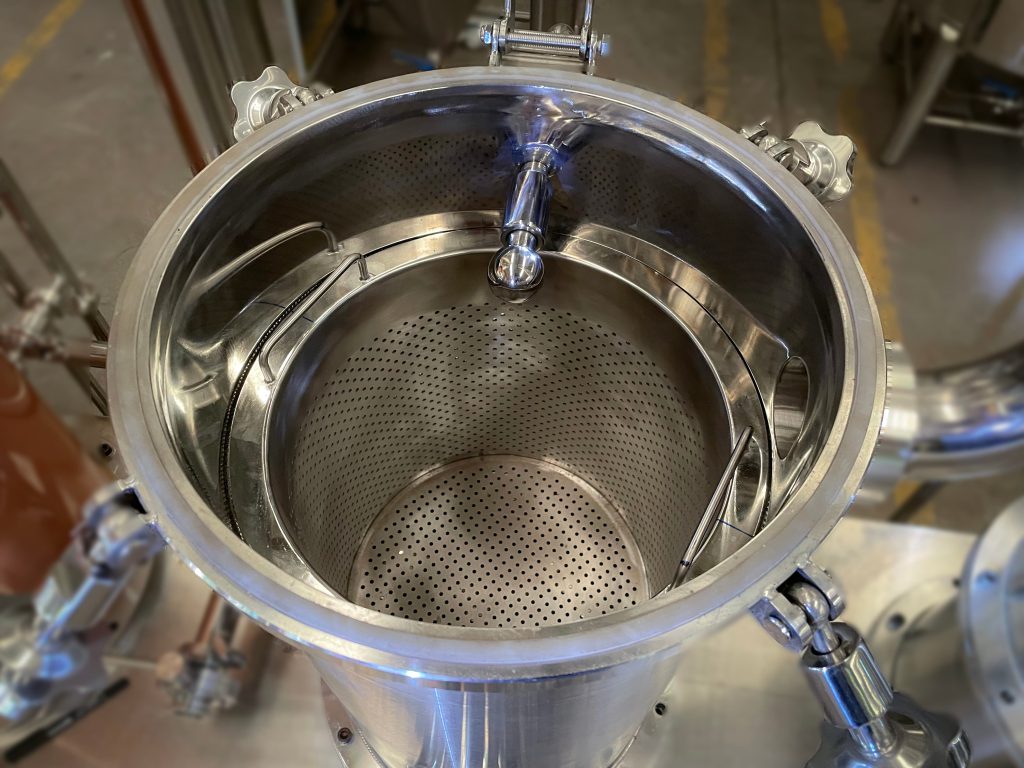Introduction

Gin, a beloved spirit with a rich history, owes much of its character to the intricate process of distillation. At the heart of this process lies the gin basket—a key component in imparting flavors and aromas to the final product. In this exploration, we delve into the science behind gin basket design, uncovering the intricacies that shape the flavor profile of your favorite spirit.
Understanding Gin Basket Design
Gin basket design encompasses various elements crucial to the distillation process. From materials to shape and size, each aspect plays a pivotal role in influencing the final outcome. Let’s break down these components:
Material Composition
Material composition is a critical aspect of gin basket design, with each material offering unique properties that influence the flavor extraction process during distillation.
Copper, a traditional choice for gin baskets, is favored for its excellent heat conductivity and catalytic properties. When vapor passes through copper surfaces, it undergoes chemical reactions that help remove sulfur compounds and enhance the overall purity of the distillate. Additionally, copper interacts with botanicals, particularly juniper, catalyzing reactions that accentuate the gin’s characteristic aroma and flavor profile.
Stainless steel, on the other hand, is prized for its durability and resistance to corrosion. While it may not possess the catalytic properties of copper, stainless steel allows for precise control over temperature and is easy to clean, making it a popular choice for modern distilleries. Gins distilled in stainless steel baskets often exhibit a cleaner, more neutral flavor profile, with botanical nuances preserved without the influence of copper interactions.
Glass, although less common, is gaining attention for its inert nature, which ensures minimal interference with the distillation process. Glass gin baskets offer unparalleled visibility, allowing distillers to observe the infusion process closely. This transparency enables precise adjustments and experimentation with botanical blends, leading to gins with distinct clarity and purity of flavor.
Each material interacts uniquely with botanicals, resulting in gins with diverse flavor profiles and characteristics. Distillers often experiment with different materials or combinations thereof to achieve desired outcomes, showcasing the artistry and innovation inherent in gin basket design.
Shape and Size
The shape and size of the gin basket play a crucial role in the distillation process, directly impacting the extraction of botanical compounds and, consequently, the flavor profile of the gin.
Shape: Gin baskets come in various shapes, including conical, cylindrical, and rectangular, each with its unique characteristics. Conical baskets, for instance, provide a larger surface area towards the top, allowing for more extensive interaction between vapor and botanicals. This shape promotes thorough extraction and imparts a robust flavor profile to the gin. In contrast, cylindrical baskets offer a more uniform vapor flow, ensuring consistent extraction throughout the distillation process. Rectangular baskets, while less common, may offer advantages in terms of space utilization and efficiency in certain distillation setups.
Size: The size of the gin basket determines the volume of botanicals that can be accommodated and the surface area exposed to vapor. Larger baskets can accommodate a greater quantity of botanicals, facilitating more intense flavor extraction. However, excessively large baskets may lead to inefficient vapor flow and uneven extraction. Conversely, smaller baskets offer greater control over the concentration of botanical flavors but may require more frequent replenishment during distillation.
Design Variations: Beyond shape and size, design variations such as slits, holes, or perforations in the basket further influence the extraction process. These features serve to modulate the flow of vapor and the distribution of botanicals, allowing distillers to tailor flavor profiles with precision. For example, baskets with fine perforations enable gradual release of botanical aromatics, resulting in a more delicate and nuanced gin, while baskets with larger openings may yield bolder, more pronounced flavors.
Heat Distribution
Efficient heat distribution within the gin basket is essential for optimal extraction. Factors such as heat conductivity and distribution mechanisms influence the uniformity of flavor extraction, ensuring consistency across batches.
Aromatics Management
Gin basket design also plays a crucial role in managing aromatics. Controlling the flow of vapor through the basket, as well as the placement of botanicals, allows distillers to tailor aroma intensity and complexity according to desired profiles.
Advancements in Material Science: Exploring New Possibilities
Recent advancements in material science have opened doors to innovative approaches in gin basket design. From nanomaterial coatings to composite structures, researchers are pushing the boundaries of traditional materials to enhance flavor extraction and improve efficiency. By harnessing the unique properties of emerging materials, distillers can unlock new dimensions of flavor complexity, paving the way for the next generation of artisanal gins.
Experimental Findings: A Comparative Analysis

To understand the impact of gin basket design on flavor extraction, researchers conducted a series of experiments using different basket configurations. The results, summarized in the table below, highlight the nuanced effects of various design parameters on flavor profiles.
| Basket Design | Material | Shape | Size | Flavor Characteristics |
|---|---|---|---|---|
| Traditional Copper | Copper | Conical | Medium | Bold juniper, citrus notes |
| Modern Stainless | Stainless | Cylindrical | Large | Subtle botanical complexity |
| Experimental Glass | Glass | Rectangular | Small | Delicate floral undertones |
Conclusion
Gin basket design is a multifaceted aspect of distillation, where science and art intertwine to create unique flavor experiences. By understanding the principles behind basket design, distillers can fine-tune their processes to achieve desired flavor profiles. As gin continues to evolve, innovative designs will push the boundaries of possibility, enriching the world of spirits with diverse and captivating offerings.
FAQ
Q: How does gin basket design differ from other distillation methods?
A: Unlike traditional pot stills or column stills, gin baskets are specifically designed for vapor infusion, allowing for greater control over flavor extraction from botanicals.
Q: Can I customize my own gin basket design for home distillation?
A: While it’s possible to experiment with homemade gin basket designs, it’s essential to prioritize safety and legality. Consulting with experts and adhering to relevant regulations is recommended.
Q: Are there any ongoing advancements in gin basket design?
A: Yes, the field of gin basket design is continually evolving, with distillers and researchers exploring novel materials, shapes, and technologies to enhance flavor extraction and aroma management.
In conclusion, the science behind gin basket design offers a fascinating glimpse into the intricate world of distillation, where innovation and tradition intersect to create spirits of unparalleled complexity and depth.
